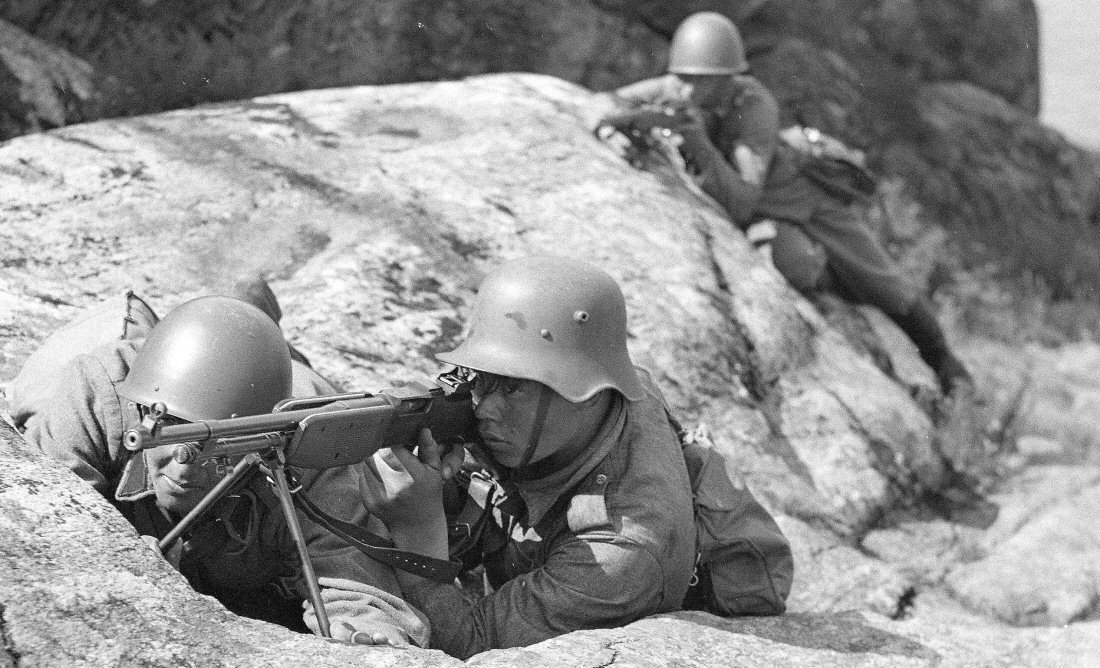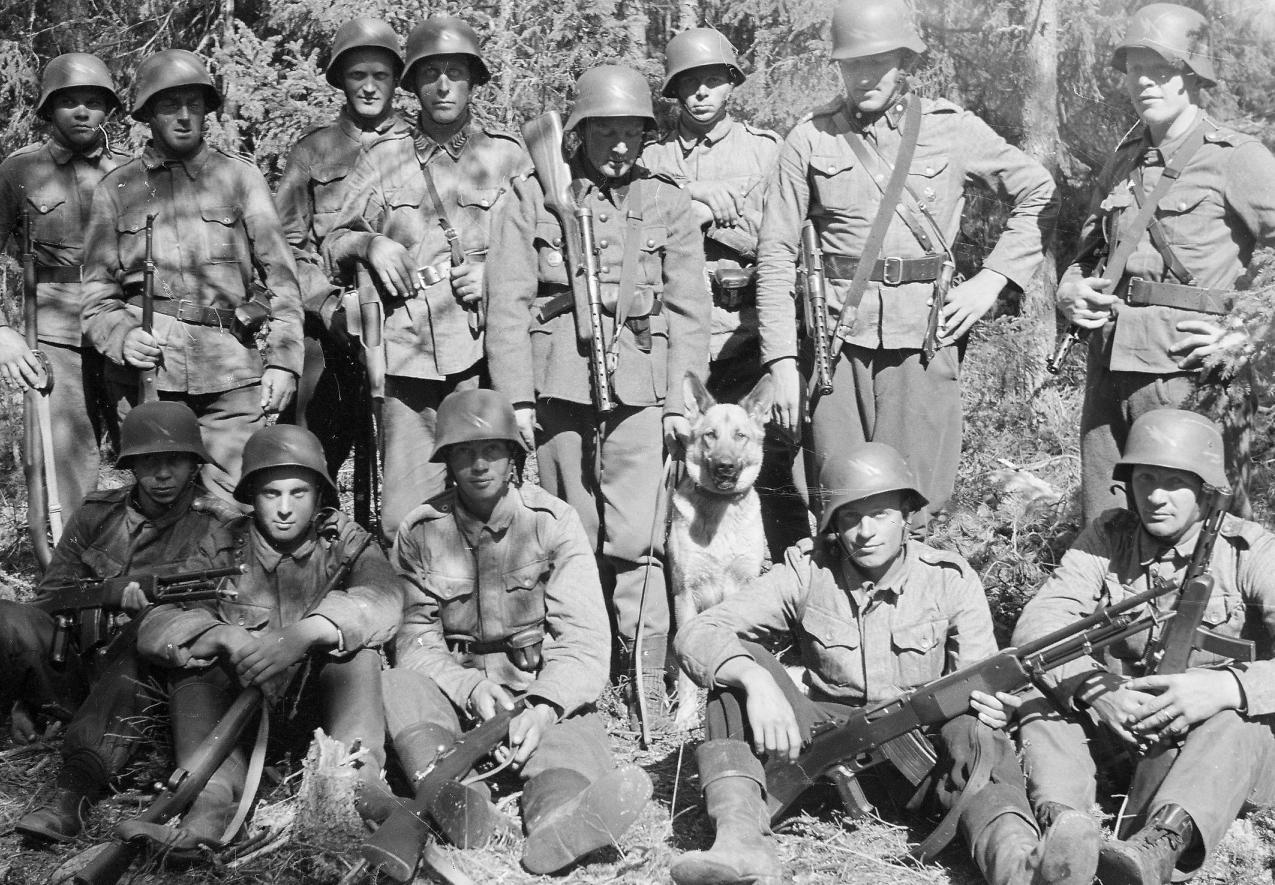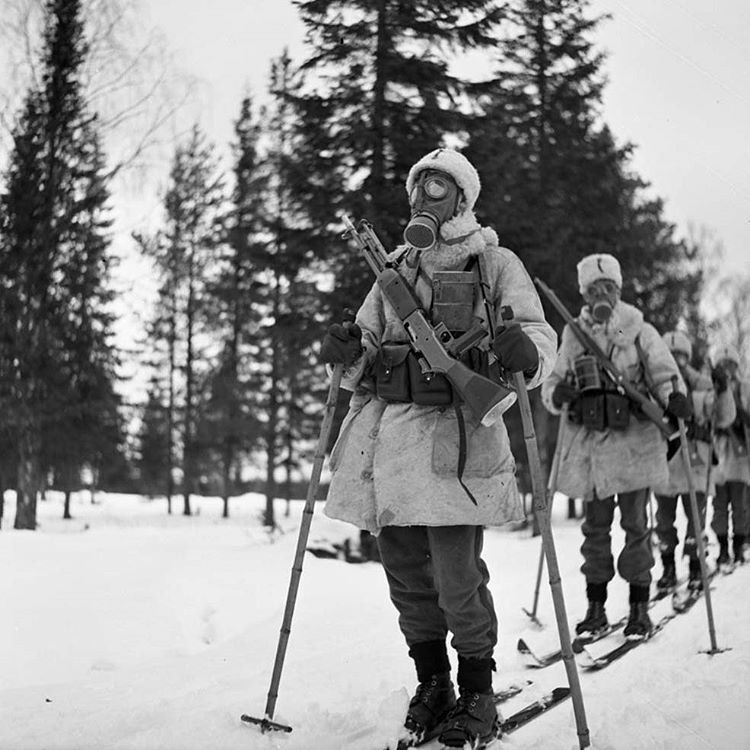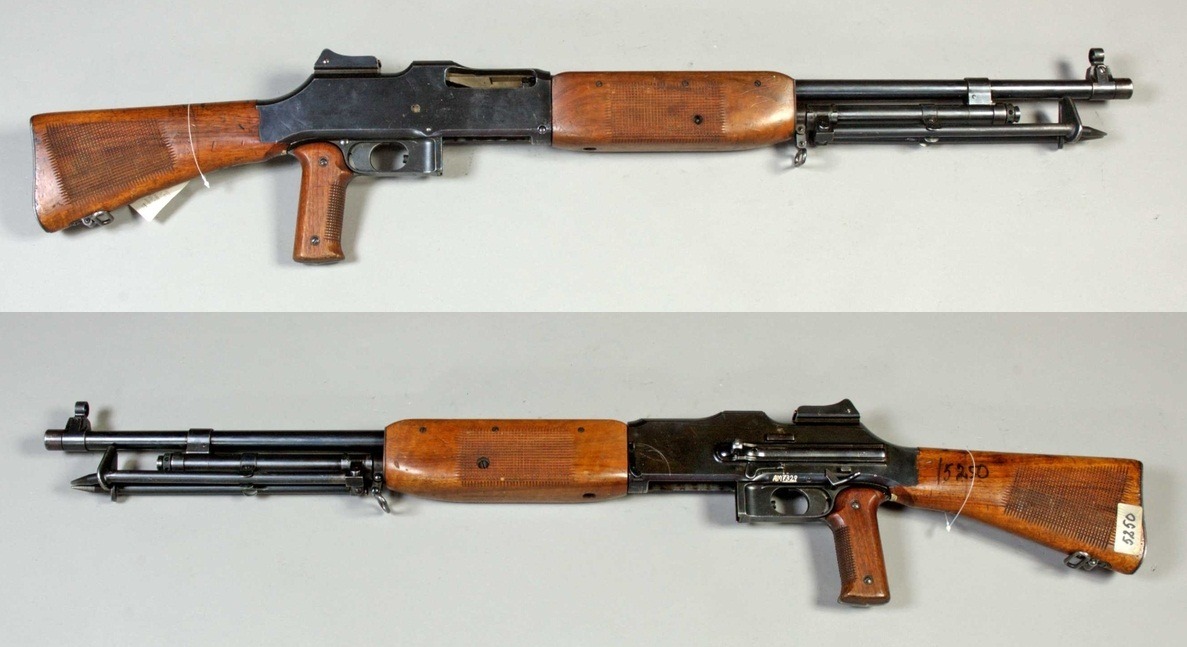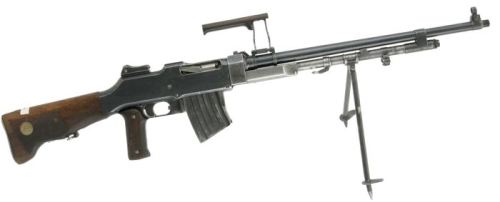KULSPRUTEGEVÄR M/1921
In 1920 the Swedish Army purchased 700 Browning Automatic Rifles from Colt, before Fabrique Nationale acquired the European manufacturing rights. These weapons differed from the original M1918 pattern as they chambered Sweden’s 6.5x55 m/94 cartridge. They also had a detachable pistol grip and a bipod - something the original M1918 was not issued with.
The light machine gun was officially adopted in 1921 as the Kulsprutegevär m/1921. Indigenous production at Carl Gustafs Stads Gevärsfaktori began in 1923. The m/21 retained BAR’s 20-round magazine capacity but because of the 6.5mm cartridge case’s shape the straight box magazine was abandoned for a curved one (see image #2). The m/21 had checkering on both the foregrip and the butt and unlike the BAR had a front sight hood and rear sights were marked in metres rather than yards. The m/21 weighed approximately the same as a later M1918A2 at 8.9kg / 19.6lbs.
While the m/21 was a well made, reliable weapon which was very controllable in fully automatic fire it suffered the same drawbacks as the M1918. It’s fixed, relatively thin profiled barrel prevented it from prolonged sustained fire. In the mid 1930s Carl Gustaf began developing an improved version of the m/21 with a quick change barrel system. The m/37 removed the m/21’s large foregrip and added a folding carrying handle. This brought Sweden’s BARs in line with contemporary designs and the m/37 became the Swedish Army’s primary support weapon until the late 1950s.
The Kg m/37, a later evolution of the m/21 (source)
Photograph evidence suggests that the m/21, at least in limited numbers, saw action during the Soviet-Finnish Continuation War (1941-44). Sources suggest Finland, desperate for small arms, purchased 130 m/21s from Sweden in early 1940. The first photograph above shows a Finnish light machine gun team, part of Finland’s coastal infantry, on an exercise in the Turku islands in July 1941. The m/21 is unloaded and the gunner seems to have his eye very close to the rear sight. The second photograph shows a platoon of men from a Swedish volunteer battalion that fought for Finland during the Continuation War. Some of the volunteers are armed with captured Soviet PPD submachine guns and two men have Swedish m/21 light machine guns.
Carl Gustav produced approximately 7,500 m/21s and production of the m/37 continued until 1949 with 15,400 manufactured. The m/21 and m/37 remained in frontline service until the 1950s when the Swedish Army adopted the FN MAG as the Ksp 58. The m/21 and m/37 remained in limited service with artillery and reserve units until the early 1970s.
2 Likes
